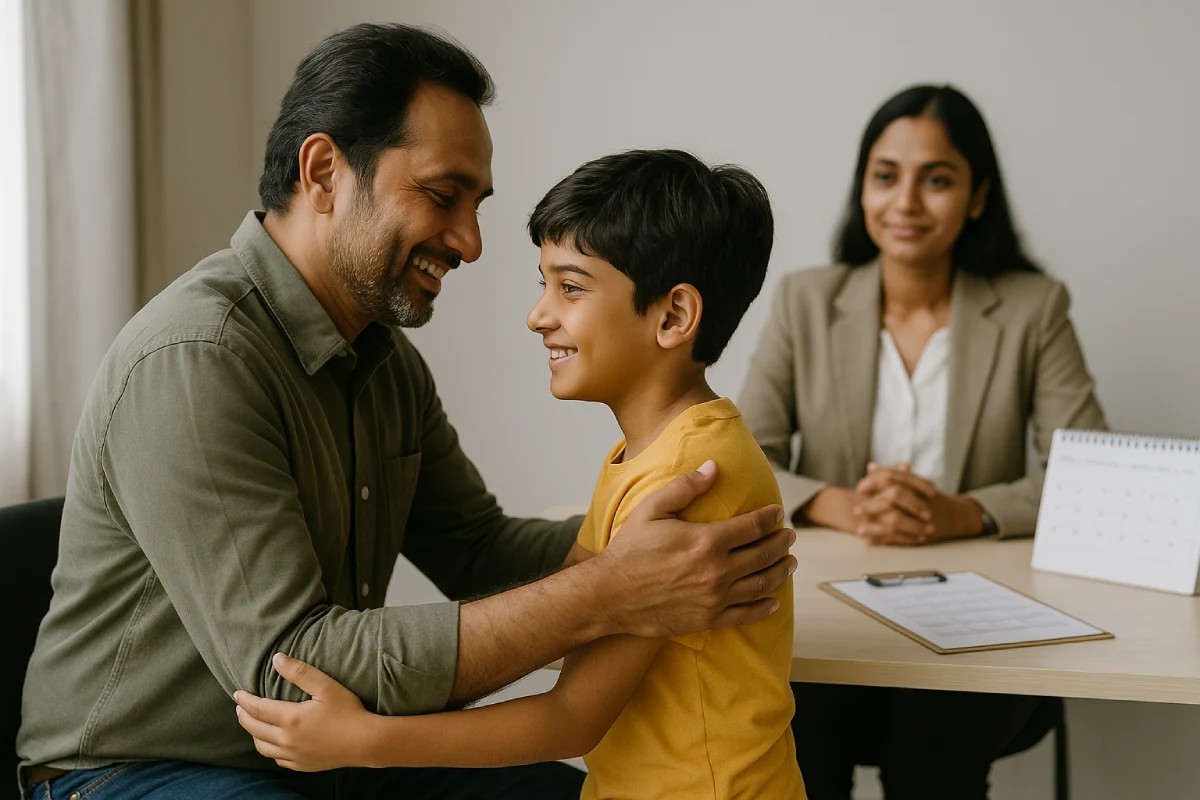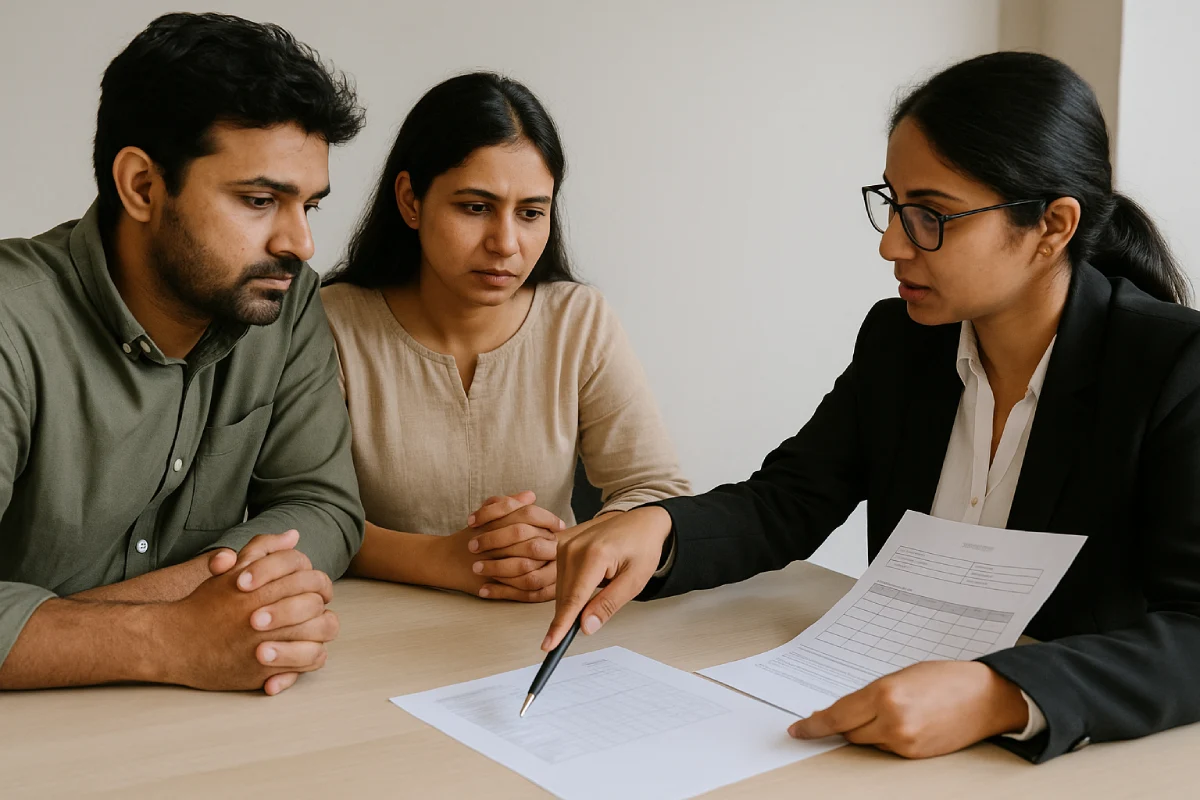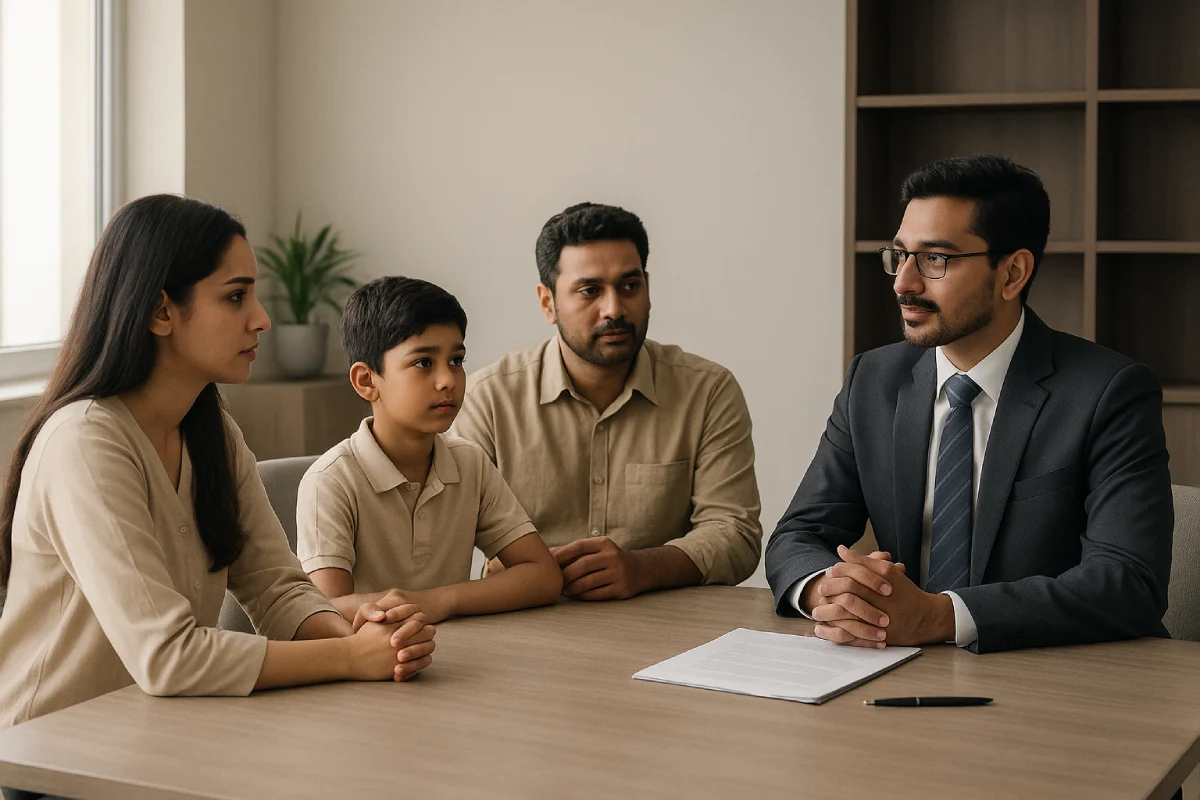Child Custody in India: Types, Rights & Court Factors
Child Custody in India is decided on the paramount welfare of the child. After a divorce, courts look at age, safety, schooling, health, each parent’s caregiving history, and the child’s bonds. Custody may be physical, legal, joint, sole, or, rarely, third‑party. Visitation rights help the non‑custodial parent stay involved unless a court finds risk.
Why this guide matters
Parents want clarity, children need stability, and courts focus on welfare. This guide turns a complex map of rules into clear steps you can use. You’ll learn the Types of Child Custody, how Visitation Rights work, and how courts decide Child Custody in India after divorce.
Understanding What is Child Custody in India
“Custody” means legal guardianship of a child under 18 and the duty to provide daily care and make major decisions. It is not a prize to “win.” It is a framework that protects the child’s growth, education, health, and emotional balance. Courts ask one core question: What arrangement best serves this child now and in the long run?
Types of Child Custody
1) Physical custody
Where the child primarily lives and who handles daily routines.
Example: The child stays with the mother on school days and meets the father on alternate weekends and half of the vacations. The mother has physical custody; the father has visitation.
2) Legal custody
Who makes major decisions about education, healthcare, and religious upbringing?
Example: Both parents must approve a school change or surgery, even if the child lives mostly with one parent.
3) Joint custody
Substantial, scheduled time with both parents and usually shared decision‑making. Parents do not live together; they cooperate on a calendar.
Example: Alternate weeks during term, split vacations, shared medical and school decisions.
4) Sole custody
All or most custodial rights go to one parent when the other is abusive, unfit, unavailable, or unwilling. Courts still try to keep safe contact where possible.
Example: Sole custody with supervised visitation for the other parent until counseling is complete.
5) Split custody (rare)
Siblings live with different parents. Courts avoid this unless siblings’ needs are very different.
Example: An older teen remains near a top school program with one parent, while the younger child stays closer to therapies with the other.
6) Third‑party custody
If both parents are deceased, absent, or clearly unfit, custody may go to a grandparent or relative where it best supports the child’s welfare.
Pro tip: Put your agreement into a written parenting plan schedules, holidays, handovers, video‑call rules, and how decisions are made. Clarity lowers conflict.
Visitation Rights (Access and contact)

A contact schedule keeps the child’s bond with the non‑custodial parent alive. Courts can order:
- Alternate weekends, a mid‑week visit, and shared holidays
- Longer blocks during vacations for long‑distance parents
- Video calls for younger children or when travel is tough
- Supervised visitation at a neutral place if safety is a concern
- Temporary restrictions if contact risks harm, with review dates
If someone blocks access, the court may enforce orders, appoint an Advocate Commissioner for handovers, or adjust terms to protect the child while preserving healthy relationships.
How courts decide Child Custody in India after divorce
Indian family courts apply one test: the best interests of the child. Typical factors include:
- Age & stage: Toddlers need stable routines and frequent, short contact. Teens need a voice, school continuity, and activities.
- Parental fitness: Safety, mental and physical health, parenting history, substance use, and ability to provide a nurturing home.
- Existing bonds: Who handled homework, doctor visits, meals, bedtime routines?
- Child’s preference: Heard with care for older children.
- History of abuse or neglect: Treated very seriously.
- Wishes of parents: A thoughtful, child‑centric plan often earns approval.
- Financial stability: Resources matter, but quality time and care matter more.
The legal framework (in brief)
Courts draw on the Guardians and Wards Act, 1890, and, depending on the marriage law, the Special Marriage Act, 1954, Hindu law, Muslim personal law, Parsi law, and, for Christians, the Indian Divorce Act, 1869. Across statutes, the welfare principle is supreme.
The process: from agreement to orders
A) Mutual consent path
If you and your co‑parent agree on parenting terms, file a joint petition with a clear parenting plan. Timelines and steps are explained here: Mutual consent divorce. Courts usually accept fair, child‑focused plans.
What to include
- School‑day schedule, weekends, holidays, and festival rotation
- Pickup and drop points, handover windows, and late‑arrival rules
- Decision rules for school changes, medical care, and travel
- Expense sharing and how to review the plan each year
- A dispute‑resolution ladder: talk → mediation → court, if needed
B) Contested path
When parents disagree, the case is contested. Learn the full procedure here: Contested divorce in India. While the case proceeds, the court may grant interim custody or temporary visitation, ask for home‑study reports, hear the child in chambers, or order supervised handovers. Final orders set detailed time, decision‑making rules, and conditions.
Evidence that helps
- Proof of involvement (school emails, report cards, doctor notes)
- Stable housing near school and a work schedule that allows caregiving
- A proposed parenting calendar that is realistic and child‑centric
- Statements from teachers or caregivers, where appropriate
Local process note: If you are filing in the city, this outline can help: Divorce process in Bangalore.
Money matters linked to custody
Custody decisions often sit beside financial orders. For a deep dive on monthly support and spousal support, see Maintenance and alimony after divorce. For asset division between spouses, read Division of property after divorce. Remember: finances support the child’s needs; they do not replace parenting time.
Common problems and fast legal remedies

Problem 1: One parent blocks access.
Remedy: Move the court to enforce visitation or vary the order. Ask for specific timing, neutral pickup spots, and “make‑up time” for missed visits.
Problem 2: A parent absconds with the child.
Remedy: File a Habeas Corpus petition in the High Court for immediate production of the child, plus interim custody or supervised access.
Problem 3: Third‑party interference or fights at handover.
Remedy: Seek supervised visitation, a neutral child‑friendly venue, staggered arrivals, and written‑only communication through a parenting app.
Problem 4: Allegations and police fears.
Remedy: Stay calm. Document facts. Courts and police protect citizens, including children. Take advice early and avoid public confrontations.
Practical parent checklist
Use this quick checklist to lower conflict and keep your child’s routine steady. Refer to it during handovers and weekly planning.
- Keep routines steady: sleep, school, activities.
- Do not criticise the other parent in front of the child.
- Respect the clock. If you must change, offer a swap in writing.
- Share medical updates and school notes promptly.
- Use video calls to bridge distance.
- Revisit and adjust the plan as your child grows.
Future trend: Toward shared parenting
India is seeing a steady move toward shared and joint custody, where parents can cooperate. Balanced time often cuts conflict and supports the child’s bond with both parents. The direction is consistent: focus on well‑being, not “winning.”
FAQs
What factors do Indian courts weigh most when awarding custody after divorce?
Courts centre every decision on the welfare of the child. They weigh age, safety, health, schooling, each parent’s caregiving record, stable housing, the child’s bonds, any abuse history, and, where mature enough, the child’s views.
How does relocation abroad affect a parent’s custody or visitation rights?
Relocation is a major change. Courts assess school access, support networks, flight‑risk safeguards, and the child’s ties to India. If relocation is allowed, orders may define longer holiday stays, video‑call schedules, cost‑sharing for travel, and undertakings to return for hearings.
How do courts balance a child’s welfare with a parent’s remarriage or past conduct?
Remarriage by itself does not decide custody. Courts ask whether the new home is safe, stable, and supportive. Past conduct matters only if it affects current parenting quality or the child’s welfare today.
What are the practical differences between physical, legal, and joint custody in India?
Physical custody = where the child lives most of the time.
Legal custody = who makes big decisions (school, health, religion).
Joint custody = planned sharing of time and usually decisions; you can have joint legal custody with either shared or primary physical custody.
How can I request or modify visitation rights if circumstances change?
Apply to vary the order. Show the change in new work hours, relocation, the child’s age or needs, or safety concerns. Ask for a clear timetable, supervised visits if needed, and review dates to check progress.
Conclusion: Put your child’s welfare first
Feeling stuck? If you’re facing blocked access, relocation disputes, unsafe handovers, or endless arguments over schedules, you don’t have to navigate it alone. Our family law team in Bangalore helps parents secure child‑centred orders fast.
What we solve quickly
- Interim custody and clear Visitation Rights when access is denied
- Practical parenting plans that reduce conflict and protect routines
- Safe handovers, supervised contact, and enforcement of orders
- Relocation/abroad travel arrangements with video call and holiday time
- Documentation strategy to present your caregiving story clearly
What you get in your first consultation
- Case review mapped to the best‑interest test
- Immediate action plan (next 7–30 days)
- Draft schedule and communication rules you can use right away
- Checklist of proofs to strengthen your case and avoid delays
Your next step: Book a confidential consultation with our divorce lawyers in Bangalore today. Let’s build a custody plan that keeps your child safe, stable, and loved while protecting your relationship and your time.







